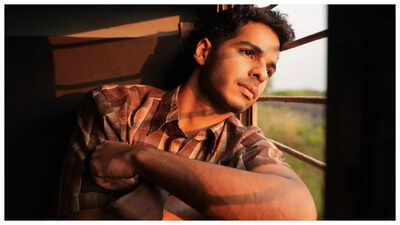Ishaan Khatter has been gaining a lot of praise for his performance in Neeraj Ghaywan’s Homebound, India’s official entry to Oscars this year. The film is based on a column by writer Basharat Peer for The New York Times. His character in the film draws inspiration from the life of Saiyub, though director Neeraj Ghaywan reimagined the backstory of his and Vishal Jethwa’s characters. .“This film is, I think it’s hard to watch, but it’s also very necessary. For me, I think it’s a very important film for the world, not only just for India right now,” Ishaan said in his exclusive conversation with ETimes.
Sharing if he was able to meet Mohammad Saiyub on whose life his role in the film is based on, he revealed: “My touch point and catalyst to this was entirely Neeraj Gawan. In fact, I knew of Basharat from earlier. I knew his work and yes he was part of Haider and he did a scene in the film. I read the article once Neeraj gave me the script, but it was Neeraj’s decision that I don’t meet Saiyub. I hope that I get to meet him now going forward.”Khatter added that the approach from the beginning was to build empathy and depth into the characters. “The whole idea was to humanize these characters and not only see the differences, but also our shared humanity. And so that you empathize with them and you’re on the journey with them. You see their ambitions, their spirit before you see the breaking of it. Ultimately it is a hopeful film.”Preparation for the role involved a deep cultural and emotional immersion. “We first started with dialect work on the film, to access that culture and close the gap. Neeraj was very insistent from the beginning that these characters will not come to you, you have to go to them. You have to give yourself and try to live these parts, not just give a great performance.And so that was always the attempt to immerse ourselves.”The actor said that research and field visits formed an important part of the process. “We read articles, we understood the historical context. And then the best thing we did was we went to Barabanki. We did a trip together, I actually insisted that instead of doing a workshop here or something, the four of us took a trip together and it was an immersion exercise.”Recalling the trip, he added, “We went to Barabanki, went to various villages. We sat with people. People were generous enough to invite us into their homes. They fed us. It was very humbling. We spoke to them about their lives, their struggles, their hopes, their aspirations, their obstacles. And, it was very humbling. It just made you feel so small compared to the lived reality, you know, that you were seeing in front of you.That trip really brought us together and it gave us something very ephemeral, something you can’t put a finger on.”



)
